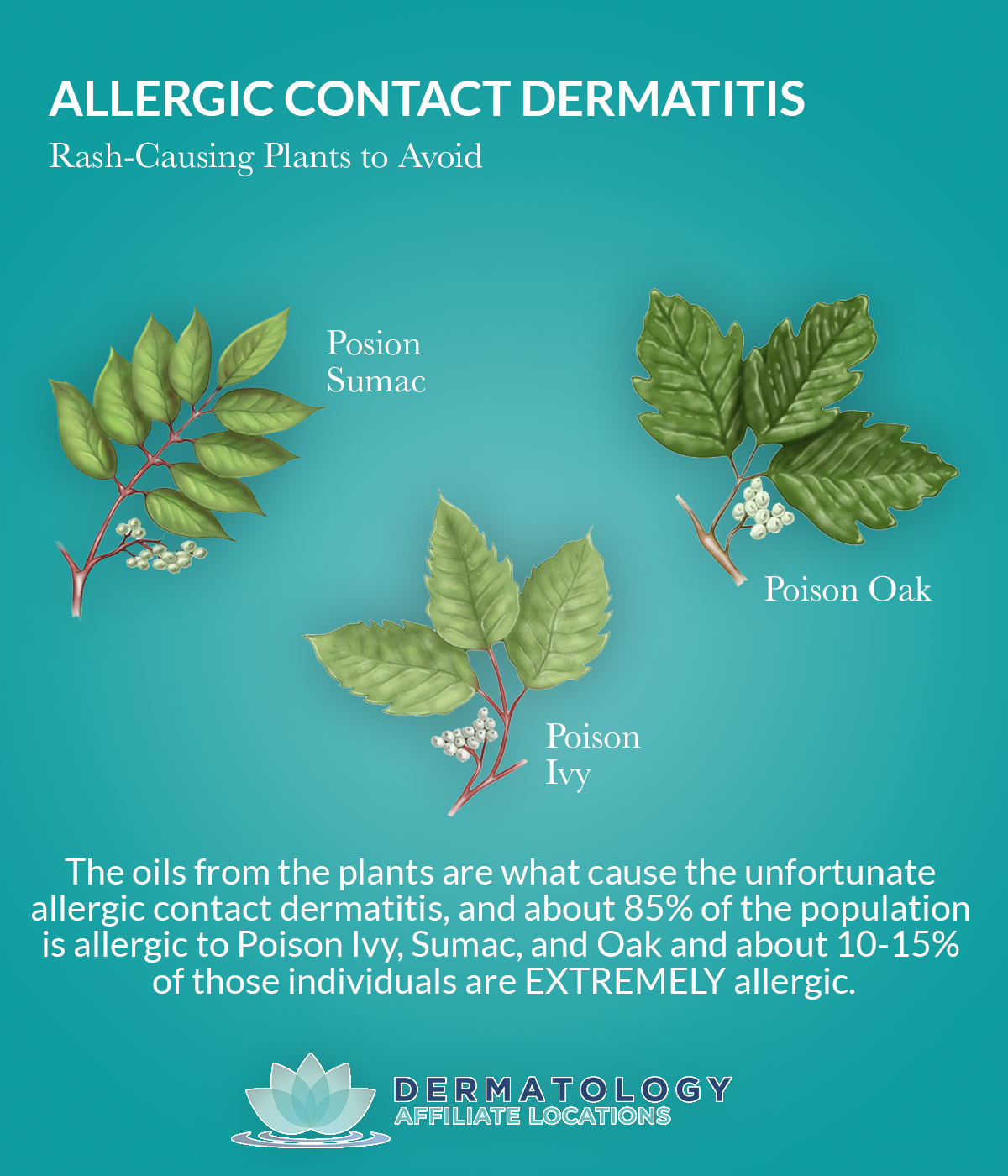Allergic Contact Dermatitis: What to Know
At this time of year as we are working in our yards, golfing and taking hikes in nature (great social distancing activities!), we run the risk of coming in contact with a variety of different plants that could cause Allergic Contact Dermatitis (ACD).
Here to explain what you can expect with allergic contact dermatitis and how to treat it is Shannon Morrow.
What does allergic contact dermatitis look like?
On the skin it will usually present with decent size blisters that are in patches or linear distribution and itch like crazy!
And then unfortunately it can start spreading and be downright miserable.
“The oils from the plants are what cause the unfortunate ACD and about 85% of the population is allergic to Poison Ivy, Sumac, and Oak and about 10-15% of those individuals are EXTREMELY allergic.”
It also happens to be the most common allergic reaction in the US affecting as many as 50 million Americans every year.

What plants cause allergic contact dermatitis?
Occasionally patients will ask us which plant caused the reaction however this is impossible to know without actually seeing the plant because the reaction on the skin is similar regardless of the plant you came in contact with.
If you are concerned it is in the yard and you are not able to identify it, then hiring a landscaper to identify and treat it appropriately is the best way to deal with it.
“One of the problems with ACD due to a plant is that every time you come in contact with the allergen, it could be a more intense reaction each time and cause repeat visits to the office and multiple courses of systemic steroids.”
We all love seeing our patients however we do not want you suffering from this, so identifying those plants in the yard and having someone get rid of it can save you a lot of troubles.
Sometimes people choose to burn it…this is a bad idea due to the reactions you could have in your airways. It should never be burned!
How to Avoid Allergic Contact Dermatitis
How do you avoid these pesky plants? It is best to have your skin covered with clothing, wear gloves, and do not touch or rub your face while gardening or wear protective clothing while you are going for a hike in nature.
If you knowingly came in contact with poison ivy, then remove your clothes and shower as quickly as possible to get the Urushiol oil off of your skin as this is the substance that causes the reaction.
I wish that this alone would prevent the reaction but sadly there are some that are very allergenic and despite these measures will still react. It is also possible to have the reaction if you come in contact with another surface that was in contact with the oil (say another person’s clothes or even your beloved household pet!).
“Typically, you will have the signs you came in contact with Poison Ivy within 1-6 days of the inoculation. However, this can vary because, as I always love to tell patients, our bodies don’t always read the text book!”
How to Treat Allergic Contact Dermatitis
So what do you do when you start to notice the Dermatitis and intense itching from this?
“Ideally start an antihistamine (Zyrtec, Allegra, Benadryl), an over the counter anti itch with hydrocortisone, and then call us ASAP because prescription topical steroids will do a much better job of fixing the problem and there are many individuals that also need a short course of oral steroids because the allergic reaction has begun and may continue until you take a pill to stop that process.”
It is also a common misconception that you can “get” poison ivy from touching someone’s lesions but that is not possible…and it doesn’t “spread” on your body this way either…once one showers the oil is off of your skin and that is what causes the allergic reaction not the lesions/rashes that develop.
When it is spreading on your body it is your allergy pathway within your body that is causing it to spread. And that is where the prescription treatments come in VERY handy!
What are other allergic contact dermatitis triggers?
Are there other agents we can be allergic to? Absolutely!
Seeing it was summertime, plants seemed to be the best to discuss however there are MANY ingredients that one could be allergic to. It is quite complex and challenging to figure out at times, however, all of the providers in our office are able to do extensive patch testing to figure out if there are particular agents you are allergic to if you are also suffering with what looks like eczema that has just not been controllable.
If you have been treated for some time and are faithful with avoiding irritants and doing your maintenance treatment and STILL battle with eczema it is possible you could also have an overlying Allergic Contact Dermatitis that we need to further investigate.
Our goal is to be the detective to try and isolate if there is an allergen at play. If there is and you avoid it this can really be a game changer!
So, if you are suffering from any chronic rash, come in to see us so we can determine if patch testing is reasonable and helpful for you and your situation.
We truly hope you all are able to avoid the pesky rashes of the summer, however, if you run into any trouble give us a call and book an appointment so we can help you out! We also truly missed our patients for the time we were away and can’t wait to see your faces (or eyes!) when you are ready to come in.
Until then, be safe and kind to one another and enjoy the beautiful weather (with appropriate sunscreen of course!).
About Shannon Morrow, PA-C

Shannon received her Bachelor of Medical Sciences in Physician Assistant Studies from Midwestern University in June 2002. Shannon has practiced locally in dermatology since 2003 and joined Dermatology Associates of Lagrange in 2010. Shannon has extensive experience in cosmetic procedures including Botox, Dysport, injectable fillers and laser procedures, in addition to diagnosing, treating and managing conditions of the skin. Shannon is an active member of the AAPA, SDPA and ISDPA and is an ACE trainer for Allergan, an elite group of injectors in the nation that train other practitioners on best practice for aesthetic injectable procedures.

